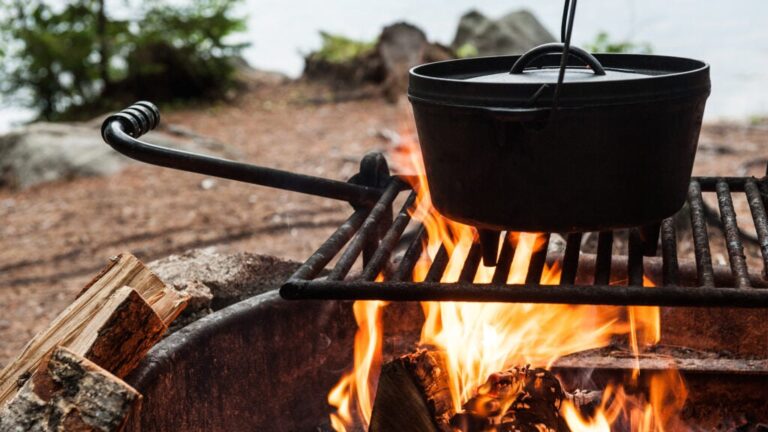Everything tastes better when you’re camping—that’s just a fact. Unless, of course, you char the pancakes over an overenthusiastic stove, or the milk curdles in a cut-rate cooler, or you impale yourself on some flimsy, dull excuse for knives, cutting your trip short (not to mention your precious fingers). You get the picture—hazards abound.
Luckily, our fearless team of 13 testers put 40 pieces of camp kitchen gear on the chopping block to bring you the seven best accessories we could find.
At a Glance
All gear in this guide was tested by multiple reviewers. When you buy through our links, we may earn an affiliate commission. This supports our mission to get more people active and outside. Learn more.
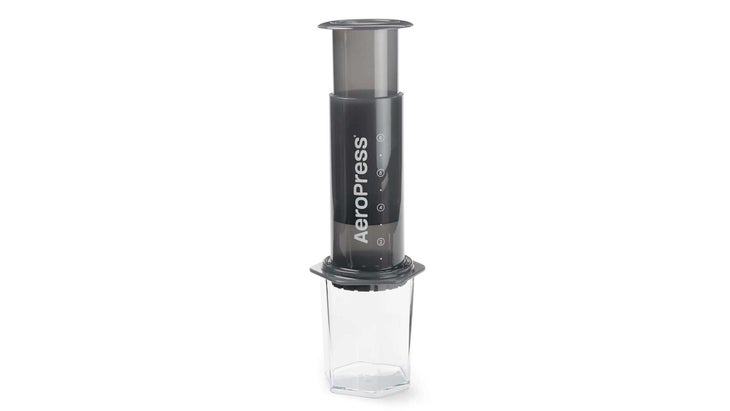
Aeropress XL Coffee Press
$70 at REI $70 at Amazon
Weight: 1 lb
Pros and Cons
⊕ Easy to use and clean
⊕ Double the capacity of the cult-classic original Aeropress
⊗ Filter cap doesn’t fit many mugs
The Aeropress XL incorporates the same plunging tech as the backcountry barista-approved original version, but with double the capacity—a volume boost that allows car-camping couples to streamline their mornings by fixing one batch of brew instead of two. “My partner and I efficiently enjoyed excellent-quality coffee together every morning while camping thanks to the XL,” reported Chris Cloyd, a June Lake-based hut keeper, ultra-runner, and coffee addict (with a “Death Before Decaf” tattoo to prove it). For anyone intimidated by the looks of this gizmo, Cloyd describes the XL as “easy to use, and easier to clean.”
Testers reported that the XL filter cap does impede the press from being used directly with many mugs, making it important not to lose the included plastic carafe. If you’re rolling solo, try the more compact, single-serving Aeropress Clear ($50).
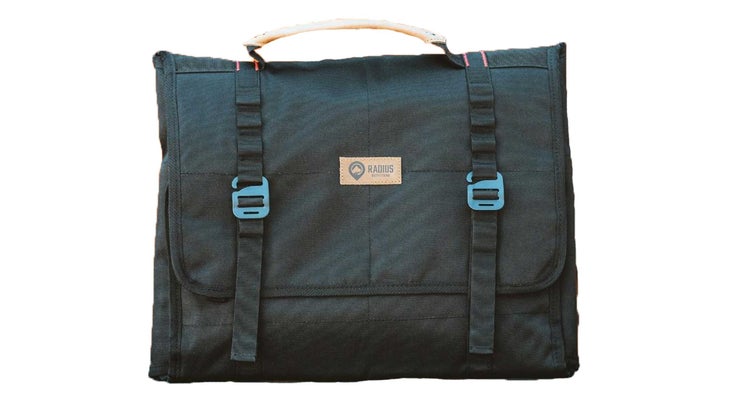
Radius Outfitters Large Kitchen Organizer
$139 at Amazon $139 at Radius Outfitters
Weight: 3 lbs
Pros and Cons
⊕ Extremely tough and well-made
⊕ Makes on-the-road organization easy
⊗ Pricey
When professional chef-slash-vanlifer Cody Buccholz got his paws on the Radius Outfitters Kitchen Organizer, he ditched his knife roll—a massive statement for any culinary pro. “I’ve bragged about how efficient, protected, and organized my tool roll is now to every chef I’ve gotten to cook for since I started testing it,” raved Buccholz after a California-to-Colorado road trip. “These guys came up with a better design than anything I’ve purchased in my career.”
Three levels of sleeves accommodate 12-inch utensils, two zippered compartments house 15-inch tools (grill masters, slot your spatulas and tongs here), while a cutting board pocket, two additional transparent pockets for smaller essentials, and an integrated bottle opener get the party started. Crafted from a 1680D Cordura exterior and lined with a glossy, easy-to-clean PVC Tarpaulin, the Kitchen Organizer is “tough, well-designed, and built for life on the road–just like everything else we’ve tested from Radius so far,” commented test director Drew Zieff. Also available in a smaller version.

Sea To Summit Detour Stainless Steel Kitchen Knife
$40 at Sea to Summit
Weight: 5.2 oz
Pros and Cons
⊕ Weighty, reliable handle
⊕ Apt size for working in tight quarters
⊕ Affordable
⊗ Possibly too small if you’re cooking for a crowd
Sea To Summit’s new, comprehensive Detour line of mostly collapsible car-camping cookware has two main ingredients: stainless steel and hard nylon.
Testers offered mixed reviews of some of the company’s products: the collapsible pots are impressively compact, but the silicone siding wasn’t ideal for even heat transfer. But there were no mixed reviews on the Detour Kitchen Knife, a compact, dexterous, multi-purpose knife with a razor-sharp, five-inch stainless steel blade. “I’m working in a small space with a tiny cutting board and this small, sharp knife was perfect,” commented Buccholz, who used the Detour kit to whip up his favorites on a road trip, among them butter chicken, green curry, and tortilla soup. “I love the way this knife felt in my hand—it’s heavy and strong, and the shape of the handle felt secure in my palm.”
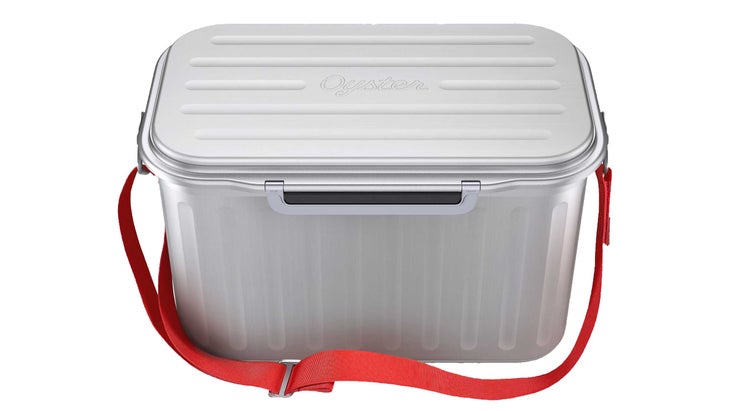
Oyster Tempo
$500 at Huckberry $500 at Oyster Tempo
Weight: 12 lbs 6 oz
Dimensions: W 20.1 x D 11.8 x H 12.6″
Volume: 23L
Capacity: 36 355ml Cans & 2 Ice Packs
Pros and Cons
⊕ Double-walled, vacuum-sealed design is thermally efficient
⊕ No ice required
⊕ Lid opens from both sides and is completely removable
⊗ Hefty price tag
⊗ One size only
⊗ No drain for rinsing or melted ice
⊗ Dents easily
The Oyster Tempo’s selling points are solid, and they better be—the sleek cooler is pricier than rotomolded options many campers already consider exorbitant. While status quo coolers call for a hefty ice-to-drink ratio, the aluminum Tempo skips ice completely. Instead, it pairs two flat, purpose-built ice packs with a thermally efficient double-walled design similar to that of your favorite water bottle. The result gives campers more packable volume (a 23-liter Oyster with ice packs keeps 36 cans cold, while a 24-liter rotomolded cooler with ice only handles 18 cans), takes up less trunk space, and still keeps contents frostier longer than the competition.
When test director Drew Zieff arrived home after a three-day trip and emptied the Tempo, he noted that his leftover beers “still felt as though they’d been plucked from a glacial stream.” Chris Cloyd, a hatchback-driving hut keeper, dug the sexy profile and compact build. “It takes up less space than our rotomolded cooler, which made trunk management easier,” he reported. When asked if he’d recommend the product to a friend, however, Cloyd joked, “Depends on their tax bracket.”
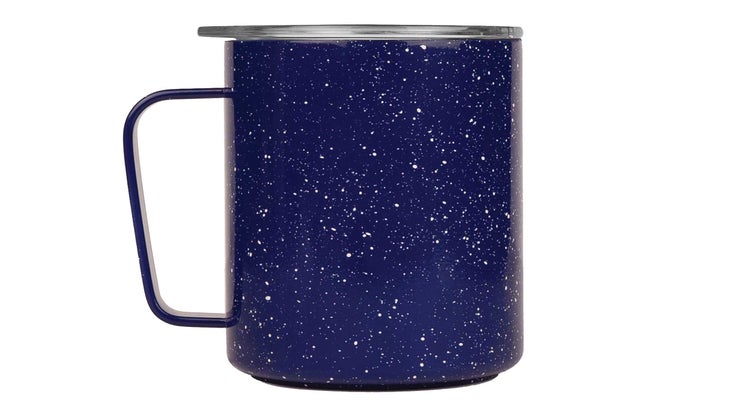
Miir 12 oz Camp Cup
$28 at Amazon $28 at Miir
Pros and Cons
⊕ Nostalgic look gives off camp vibes
⊕ Push-tab lid is road-trip-friendly
⊗ 12 ounces ain’t always enough
Were it a cocktail, Miir’s Camp Cup would be equal parts contemporary and classic. The double-walled, vacuum-insulated, stainless steel mug sports an intuitive push-tab lid—everything a modern cup collector covets—but it’s available in bright, speckled hues that salute the enamel mugs of yesteryear.
Amanda Monthei, a wildfire podcaster and hot beverage connoisseur, tested a green-speckled Camp Cup while camping in Umatilla and Gifford-Pinchot National Forests and loved both form and function from first sip. “It doesn’t burn your mouth—that’s the one thing I hate about real enamel mugs,” she reported. “And then by the time the cup has cooled, that hot drink is also cold!” The Miir version, she opined, offers campers the best of both worlds: it’s a clear stylistic homage to those cute, spatterware relics, but modern insulation minimize chances of a seared upper lip or, worse, a lukewarm drink.
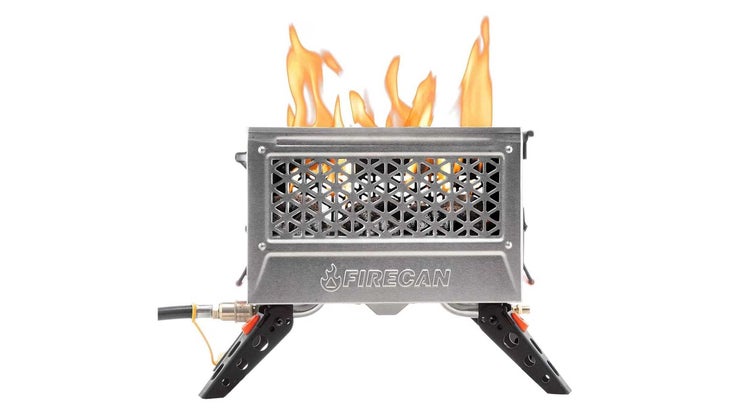
Ignik FireCan Deluxe Portable Propane Fire Pit and Grill
$300 at Backcountry $300 at Amazon
Weight: 13.8 lbs
Pros and Cons
⊕ Dual-purpose fire pit and grill combo
⊕ Quick-and-easy fires no matter where you roam
⊕ Extremely compact
⊗ You may want to purchase a new 5-lb propane tank
⊗ Cooking for groups is challenging
⊗ Oven mitts aren’t a bad idea
Fire ban? Meet the FireCan Deluxe—Ignik’s durable, shoebox-sized, propane-powered firepit and grill combo.* “It’s a safer solution to campfires,” commented Heather Hendricks, a part-time vanlifer and Colorado-based digital nomad who loved having a warm, enchanting, and contained fire no matter where she parked. Having a powerful propane grill or a firepit at this size is a win for any car camper—having both is the dream.
Grilling is simple: just attach a propane tank via the included Quick Connect hose to the marked grill input, light it with a long lighter, and drop in the grill attachment. “It gets hot—fast. I was blistering peppers within minutes,” chimed in Tahoe-based category manager Drew Zieff.
Testers had a few complaints: removing the grill and adjusting the lid can be finicky, so one recommends bringing oven mitts. Also, three or four salmon filets max out the grill, so feeding a bigger group necessitates cooking in shifts. For the most part, though, FireCan feedback was warmer than its 38,000-BTU output. You may also want to get a smaller 5-pound tank—20-lbs tanks are overkill for a quick camping trip.
*In certain conditions, such as high winds or severe drought, all open flames may be banned. When in doubt, check in with local rangers, forest service, fire departments, etc.
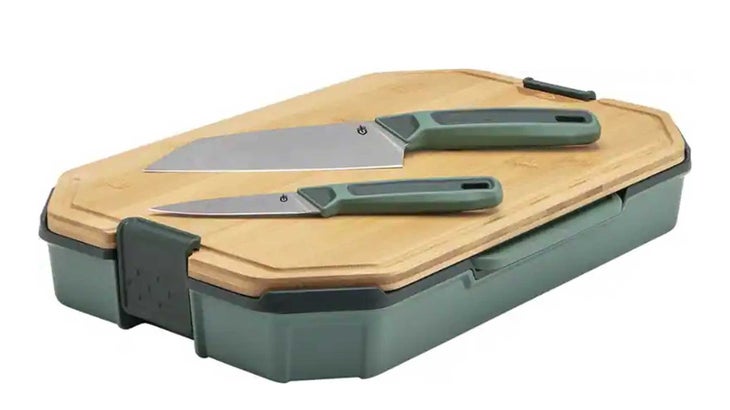
Gerber Compleat Cutting Board Kit
$110 at Gerber Gear $110 at Cabela’s
Weight: 4 lbs 4 oz
Dimensions: 9.6” x 15.6” (Bamboo cutting board), 8.9” x 14.3” (polypropylene cutting board), 6” blade (Chef’s Knife), 3.25” blade (paring knife)
Pros and Cons
⊕ Self-contained cutting board kit
⊕ Comes with kitchen essentials
⊕ Storage space for you to add your favorite tools
⊗ Cutting board lid can get dirty on the road
Nothing excites car campers like space-saving gear, and that’s exactly what Gerber’s new Compleat Cutting Board Kit is. Approximately the size of a casserole dish, the six-piece set features a striking bamboo cutting board that doubles as a lid, another polypropylene cutting board, two sharp, ergonomically handled knives (a 3.25-inch paring knife and a six-inch chef’s knife), and a two-piece set with nifty storage space for additional kitchen tools.
For category manager Drew Zieff, the set was a brilliant addition to the kitchen of his custom-built 2006 Chevy Express, replacing cutting boards that used to flop off the counter whenever he hit a pothole. Overall, the Gerber piece is a game-changer—it sits self-contained under the stove, no storage bin required.
How We Test
- Number Of Testers: 13
- Pieces Of Gear Tested: 40
- Miles Road Tripped: Approximately 9,779
- Longest Stint On The Road: 6 Weeks
- Forearms Singed: 2
- Cups Of Coffee Consumed: Enough to live, not enough to die. High triple digits?
Our testers run the gamut, from car campers who care more about efficiently shoveling down calories than fixing ornate meals, to gourmet chefs whipping up five-star cuisine in teeny van kitchens and over bonfires on the beach. This diverse team road-tripped, car camped, boondocked, and vanned all over the American West for months, cheffing up meals and taking notes all the while. Upon return to civilization, they filled out review forms for each camp kitchen item, ranking aspects like durability and practicality on quantitative scales. Then, they dove deeper into qualitative questions. For instance:
- What recipes did you whip up with this gear and where?
- Did this piece of gear make your life on the road easier or harder? Better or worse? How so?
- Would you use this product at home, too, or strictly at camp? Why or why not?
Last but not least, our lead tester and category manager, Drew Zieff, analyzed as much gear as possible himself, sifted through the review forms, then compiled the reviews.
Meet Our Testers
Drew Zieff
Drew Zieff is a Tahoe-based freelancer who writes for Backcountry Magazine, REI, Gear Junkie, and Forbes, among others. A regular Outside contributor, he heads Outside’s winter snowboard gear coverage and summer car camping accessories and kitchen reviews. His appreciation for cooking can be traced back to his formative years in high school, when he inexplicably began to experience red eyes, a dry mouth, and a sudden, overwhelming passion for the Cooking Channel. In 2018, he and his partner turned a plumbing van into their dream adventure mobile—a speedbump-filled odyssey. After a couple of years of vanlife, during which he took the lead on camp cookery, the couple put roots down in Tahoe. They still take as many van trips as possible and love to whip up elaborate meals in BLM pull-offs and Walmart parking lots.
Amanda Monthei
Amanda Monthei is a writer, public information officer on wildfires, and the host of the Life With Fire podcast. A former wildland firefighter herself, she applies her knowledge gleaned from the front lines to educate the public. She’s written about wildfires and natural disasters for Outside as well as NBC, The Atlantic, and The Washington Post. She’s also an avid angler, surfer, and skier, and pens stories on a range of outdoor subjects. Whether traveling for business or pleasure, she’s used to camping for extended stints in her 2000 Tundra, whipping up meals on backroads shoulders and backwoods campgrounds, and reviewing car camping accessories for Outside along the way. Monthei tested camp mugs, pots, and more while road tripping throughout the Pacific Northwest this past summer and fall.
Cody Buccholz
Cody Buccholz is a professional chef who enjoys surfing, snowboarding, and adventuring in his 2008 high-top Sprinter with his pup, Jefecito. When he’s not slinging gourmet grub, you can often find Buccholz posted up in a beach or trailhead parking lot, whipping up savory meals for new and old friends. He tested a small mountain of gear for this article while on a long, detour-filled road trip from California to Colorado, and brings a discerning, professional perspective to our camp kitchen gear testing.


